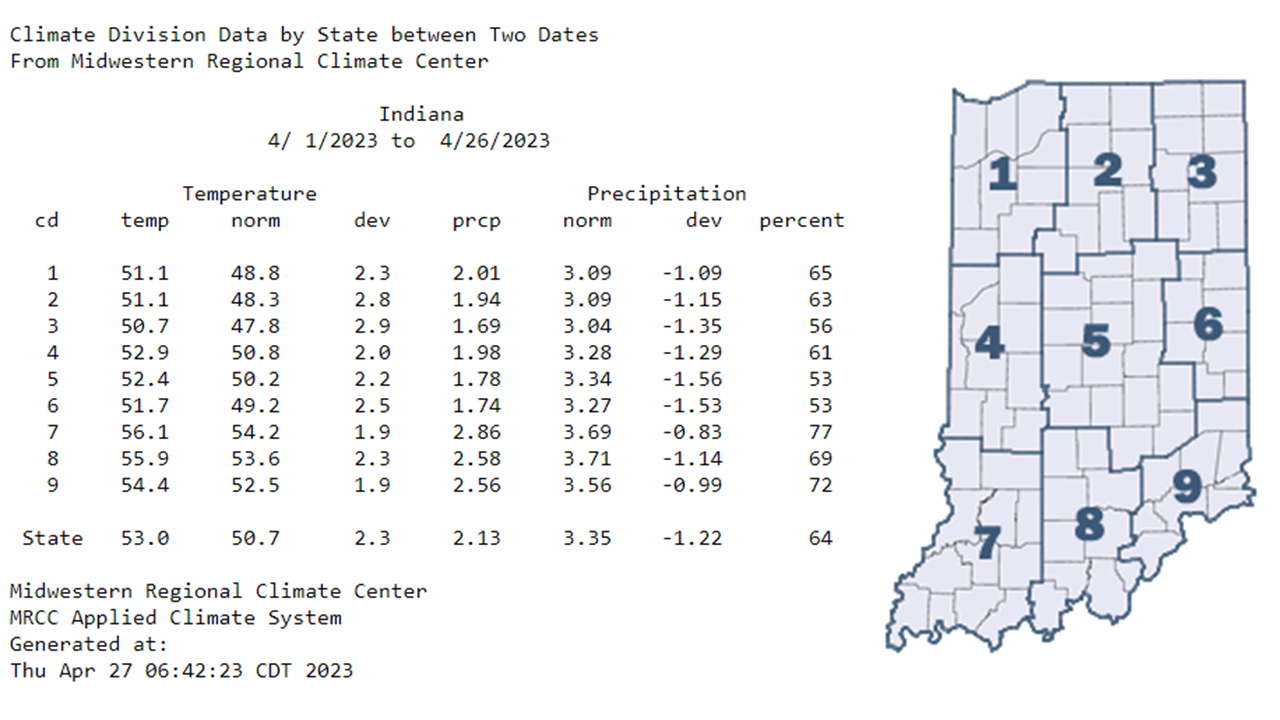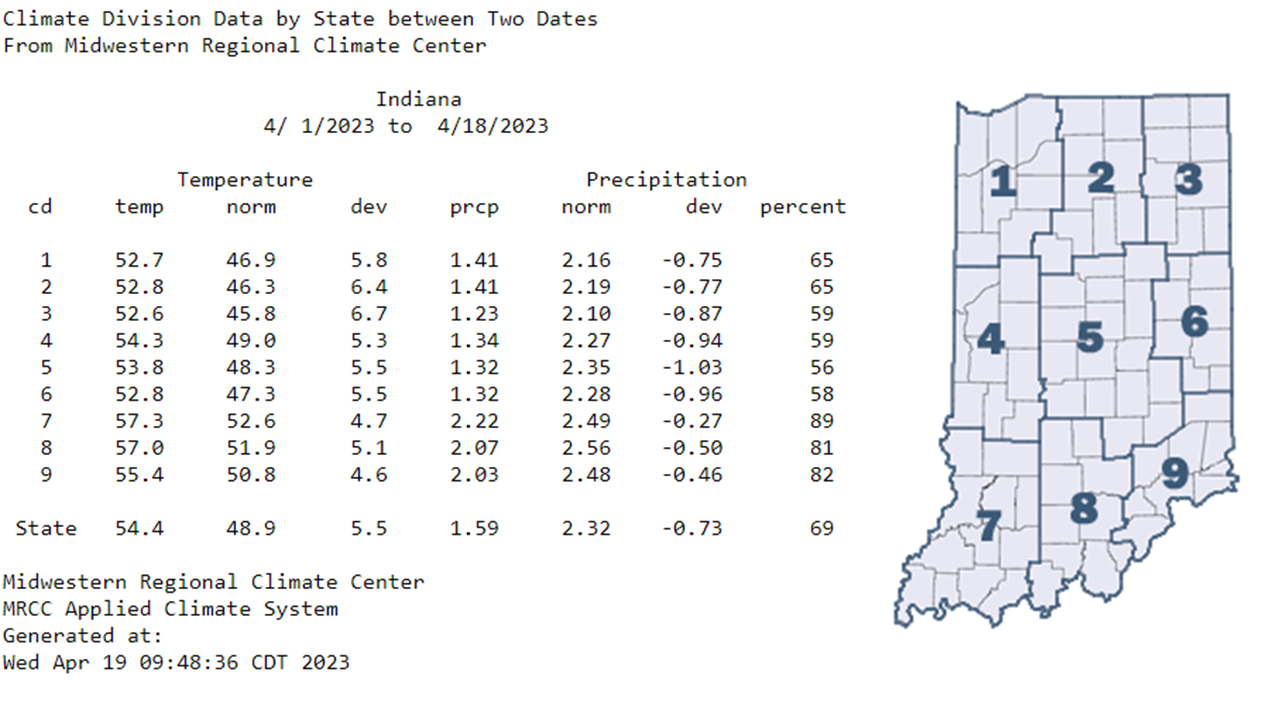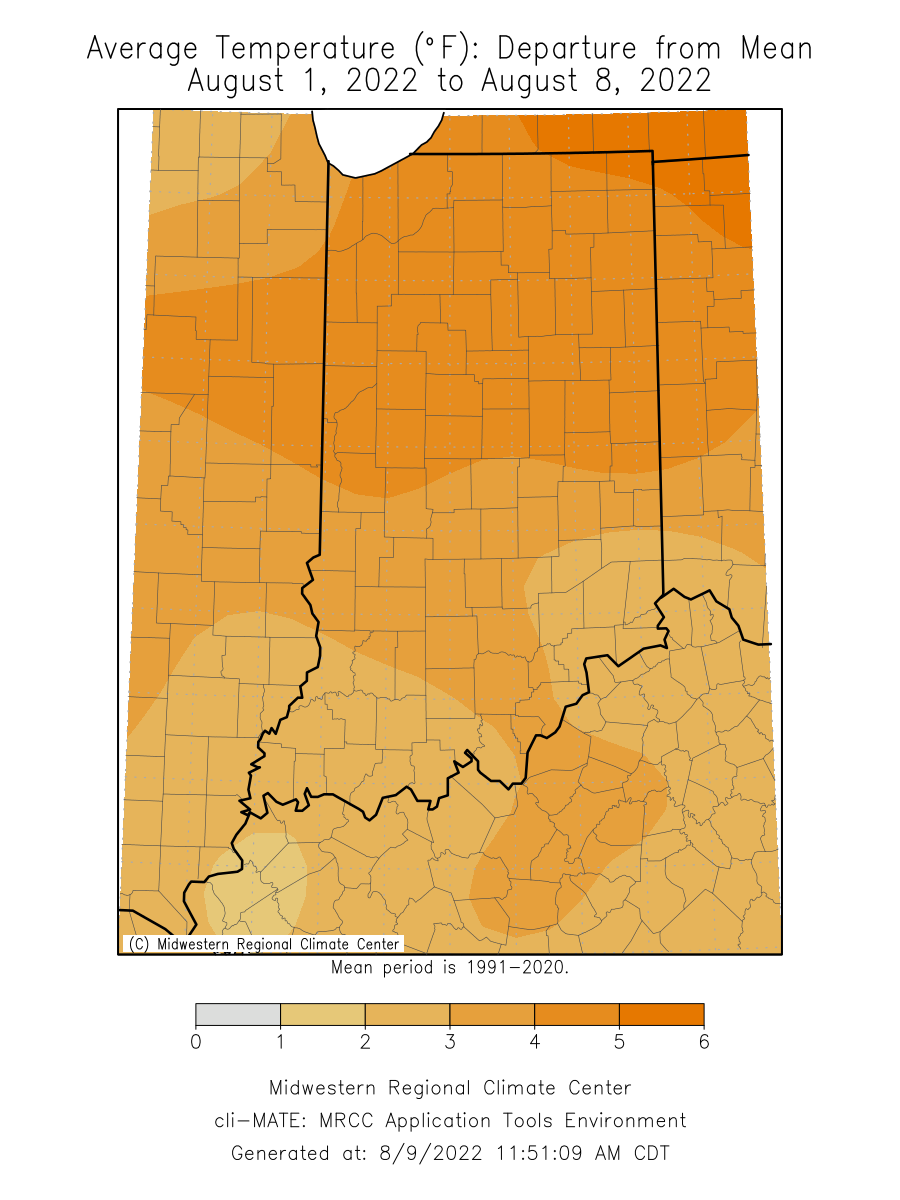
Despite the cooler weather we’ve experienced the last couple of weeks, temperatures from April 1st through 26th averaged 2.3°F above normal for the entire state (Figure 1).


Despite the cooler weather we’ve experienced the last couple of weeks, temperatures from April 1st through 26th averaged 2.3°F above normal for the entire state (Figure 1).

Through the first 18 days of April, temperatures ran 5.5◦F above normal statewide (Figure 1).

Much like March, April has gotten off to a warm start.

Indiana experienced near-normal temperatures for March as the state averaged 40.9◦F, despite the record warmth at the beginning of the month (Figure 1).

As meteorological winter officially ended on Feb 28, we still have a few more official days of winter left.

Fall has brought cooler weather through the first twelve days of October.

September has gotten off to a warmer-than-normal start through September 7, averaging 2.1◦F above normal across the state (Figure 1).

For the second week in a row, the much-appreciated cooler temperatures remained from August 17-23. The preliminary state average temperature was 71.2◦F, which was 1.2◦F below the 1991-2020 normal.

Cooler weather has arrived as all of the Indiana climate divisions average temperatures were 1-1.8◦F above normal, compared to the 4-6◦F above normal temperature departures from a week ago.

July temperatures averaged 1◦F above normal but had a couple of periods of extreme heat.
© 2025 Purdue University | An equal access/equal opportunity university | Copyright Complaints | Maintained by Pest&Crop newsletter
If you have trouble accessing this page because of a disability, please contact Pest&Crop newsletter at luck@purdue.edu.